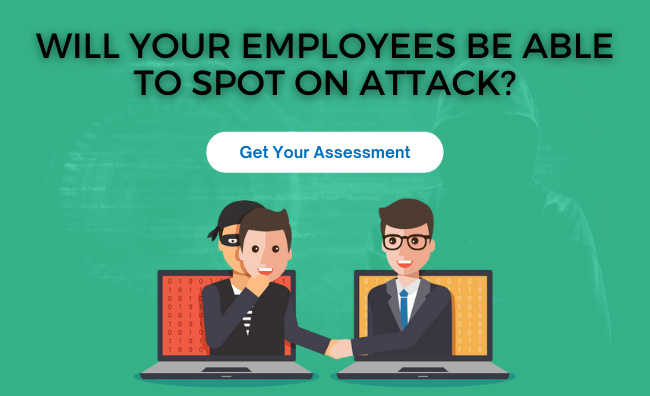%20(50).png?width=650&name=Blog%20ctas%20(bottom)%20(50).png) Phishing is one of the most prevalent cyber threats today. According to a cyber-trends report by CISCO, it constituted over 80% of all reported data breaches in 2021. Although most people understand what phishing is, they still fall victim because it's a sophisticated, constantly evolving scam.
Phishing is one of the most prevalent cyber threats today. According to a cyber-trends report by CISCO, it constituted over 80% of all reported data breaches in 2021. Although most people understand what phishing is, they still fall victim because it's a sophisticated, constantly evolving scam.
Why is Phishing So Prevalent?
Phishing attacks employ social engineering techniques to trick you into revealing sensitive information. They’re popular among bad actors for these reasons:
- Humans are usually the weakest link in a cybersecurity system. Unlike machines, they get tired, confused, and experience various emotions, which increases the likelihood of making mistakes.
- Most organizations don't implement preventive measures against phishing attacks. They have an insufficient backup, poor staff training, and insecure BYOD and WFH devices.

- Cybercriminals utilize bigger budgets and increasingly sophisticated tools to rival established cybersecurity solutions.
- Better coordination makes it easier to access the data needed for phishing attacks. For instance, criminals who commit massive data breaches sell the information on the dark web. Smaller players can easily acquire credit card numbers, addresses, and other information for more targeted attacks.
- Phishing tools are more affordable. Instead of coding or hiring expensive hackers to create malicious programs, modern cybercriminals can purchase Malware-as-a-Service (MaaS) solutions on the dark web.
Types of Phishing Attacks
Phishing campaigns are large-scale attacks that use a specific template to target several people. Although email phishing is the most popular, multiple variations exist. The five most common types are:
1. Spear phishing
Spear phishing is a more targeted form of email phishing. Hackers start by collecting relevant information from publicly available sources such as the company website and social media. They then use it to create genuine-looking emails purportedly asking specific individuals for sensitive details. The target is more likely to comply if they believe it's an internal request.
2. Whaling
This variation gathers information about an organization's senior leadership, or "whales," such as the CEO and CFO. Cybercriminals create spoof emails impersonating them and contact other employees requesting money or urgent information.
3. Clone phishing
 Clone phishing imitates past actions taken by genuine companies to obtain information from unsuspecting people. For instance, they can create an email purportedly from your bank urging you to update your password and other personal information. They use these details to access and transfer funds from your online banking account.
Clone phishing imitates past actions taken by genuine companies to obtain information from unsuspecting people. For instance, they can create an email purportedly from your bank urging you to update your password and other personal information. They use these details to access and transfer funds from your online banking account.
4. Vishing
Vishing is a portmanteau of "voice" and "phishing." Cybercriminals impersonating authority figures call their targets and demand they provide specific information urgently to avoid penalties. These attacks typically occur during stressful periods such as the tax season.
5. Smishing
This form of phishing is similar to vishing, except it utilizes texts or SMS instead of voice calls.
How to Identify and Prevent Phishing Attacks
Training your employees on spotting phishing attempts is one of the most effective measures against attacks. Tell-tale signs of suspicious emails include grammatical errors, shortened links, an unofficial tone, and images with minimal text. Abnormal requests from colleagues may mean hackers have compromised their online accounts.
Cybercriminals also use shared drives or password-protected documents to steal various credentials. Be wary of urgent emails from service providers that don't give you enough time to study their requests. Other signs include suspicious pop-ups, websites with abnormal color schemes, and browser warnings against particular links.
Apart from training your staff, embrace the latest cybersecurity solutions. They include enabling multi-factor authentication, performing regular data backups, installing email filters, and automatic security patches. Additionally, conduct regular anti-malware scans and limit network access to users with pre-defined credentials.
Conclusion
Hummingbird Networks has been a trusted IT vendor for nearly two decades. We offer you the latest hardware and software solutions to help your organization achieve its objectives. Our cybersecurity services include web application vulnerability assessment, penetration testing, and optimal network configuration. Contact us today for more details.










